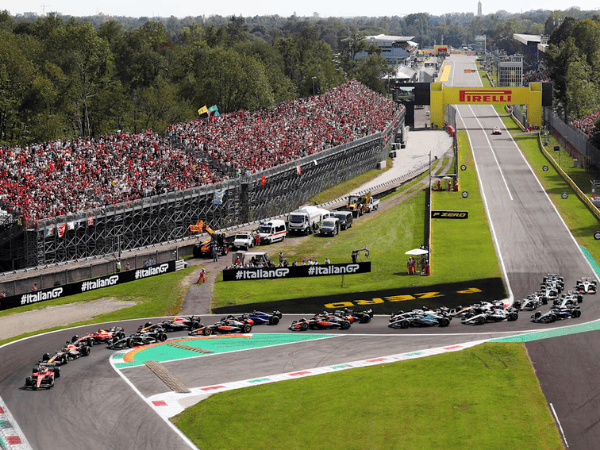views : 837
3 Min Read
Autodromo Nazionale Monza: Visiting the Temple of Speed in Italy
The ardent fans of motorsport take stock of every detail under the umbrella. How tight the turns will be for their favorite driver and where the opportunities lie for a potential overtake in the F1 race. However, for the masses across the globe, Formula 1 often runs parallel with the idea of speed, which, in turn, brings the thrill to the sport. The true test of this virtue in Formula 1 racing takes shape religiously every year when teams arrive at the iconic Autodromo Nazionale Monza for the Italian Grand Prix. One of the few circuits to be featured on the F1 calendar every year since its inception, the Italian track is famously known as the 'Temple of Speed'.
The timeless Temple of Speed: Autodromo Nazionale Monza
Standing north of Milan, the Autodromo Nazionale Monza stands as a monument to motorsport history. Established in 1922, it is the world's third purpose-built motor racing circuit and the oldest in mainland Europe. Monza has been the heart of Italian motorsport for over a century. Monza's inaugural race, the second Italian Grand Prix, was held on 10 September 1922. Since then, the circuit has been a mainstay in the Formula 1 calendar, hosting the Italian Grand Prix every year since 1949. The sole exception was 1980 when the race was moved to Imola during Monza's refurbishment.
The circuit's design has evolved over the years to enhance safety and accommodate faster cars. Notable modifications include the addition of chicanes in the 1970s to reduce speeds and the reconfiguration of certain corners to improve driver safety. Despite these changes, Monza has retained its high-speed character, with long straights and fast corners that challenge both drivers and machines.
The current Grand Prix layout spans 5.793 kilometers (3.600 miles) and features 11 turns. Key sections include the Curva Grande, the Lesmo corners, the Variante Ascari, and the Curva Alboreto, which was formerly known as Parabolica. Monza is renowned for its high-speed nature, with Formula 1 cars reaching top speeds exceeding 350 km/h (217 mph). Drivers are at full throttle for approximately 80% of the lap, making engine performance and aerodynamic efficiency crucial. Overtaking opportunities are primarily found at the end of the main straight into the Variante del Rettifilo and into the Variante della Roggia.
The Autodromo Nazionale Monza has been the site of numerous historic moments, including the closest finish in Formula 1 history at the 1971 Italian Grand Prix, where Peter Gethin won by just 0.01 seconds. The circuit has also witnessed tragedy, with several fatal accidents over the years, leading to continuous safety improvements. In 2020, Lewis Hamilton set the fastest pole position lap in Formula 1 history at Monza, with an average speed of 264.362 km/h (164.267 mph).
The 2025 F1 calendar would bring the troupe to the circuit in September for the Italian Grand Prix. Meanwhile, the 2024 Italian Grand Prix, held on 1 September, was a memorable event for Ferrari fans. Charles Leclerc secured a home victory for the Scuderia Ferrari, finishing 2.664 seconds ahead of McLaren's Oscar Piastri. Lando Norris, who started from pole position, completed the podium in third place. Leclerc's win marked Ferrari's first triumph at Monza since 2019 and the race attracted an attendance of 335,000 spectators, underscoring Monza's enduring appeal.
